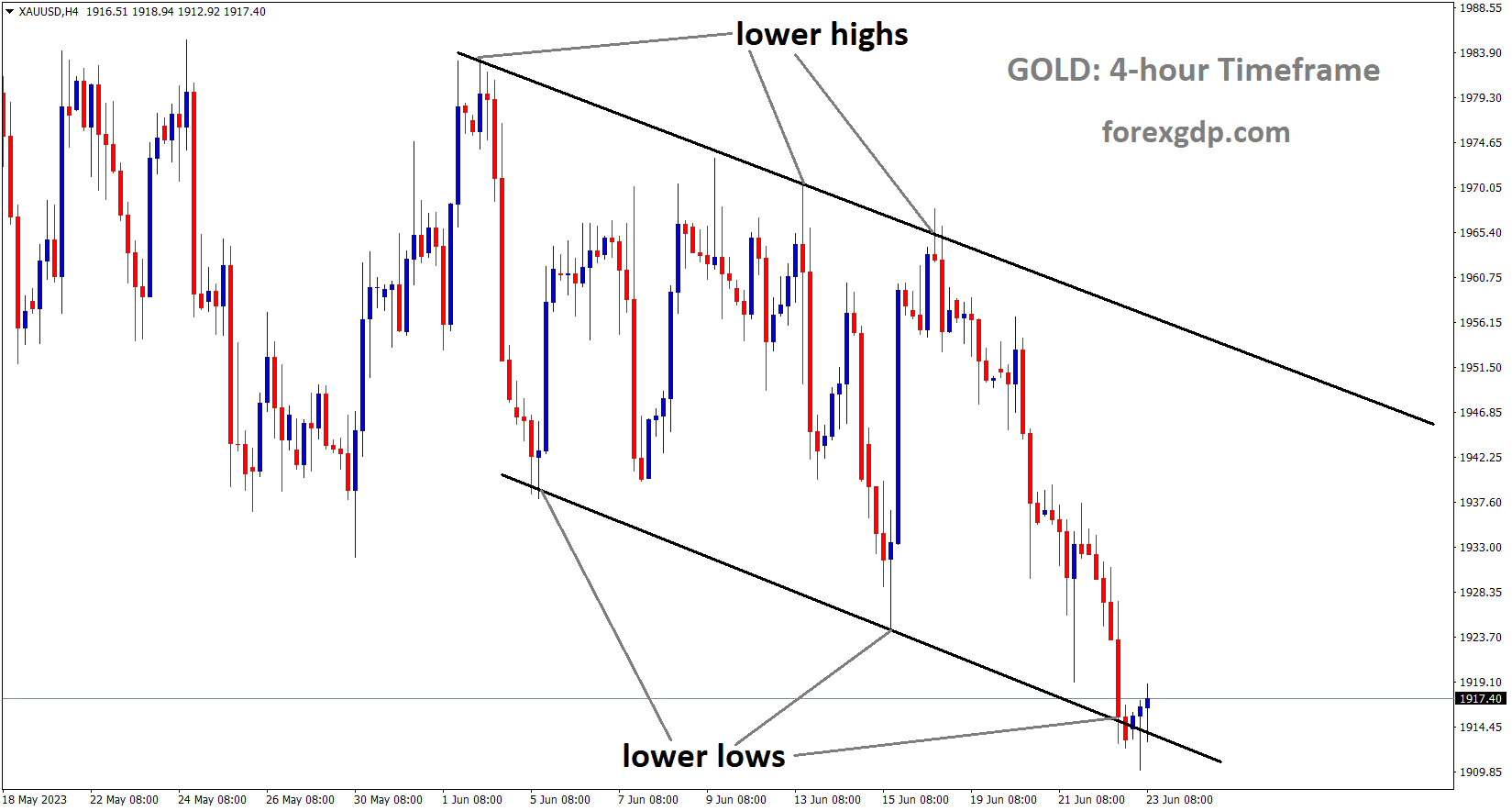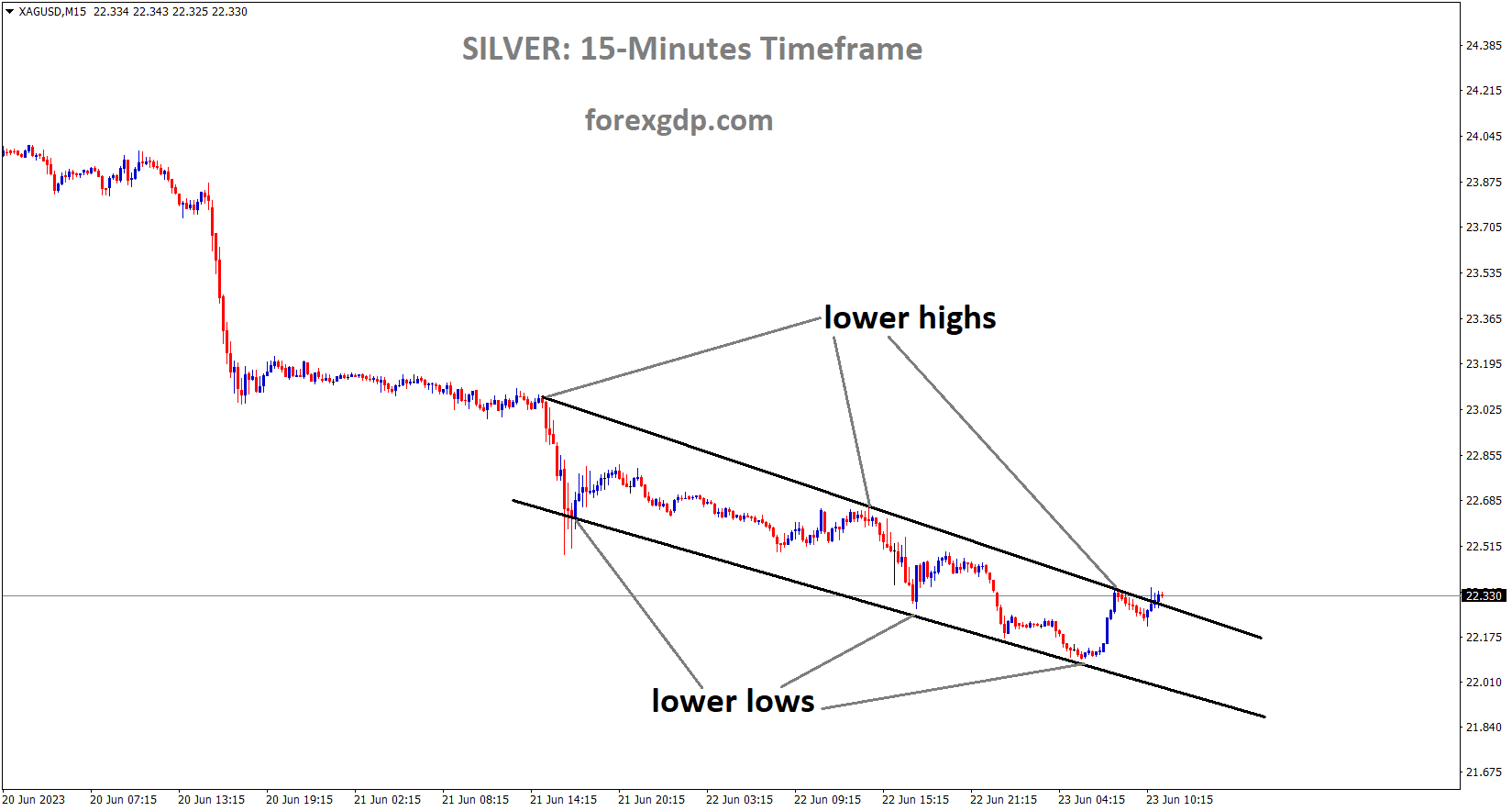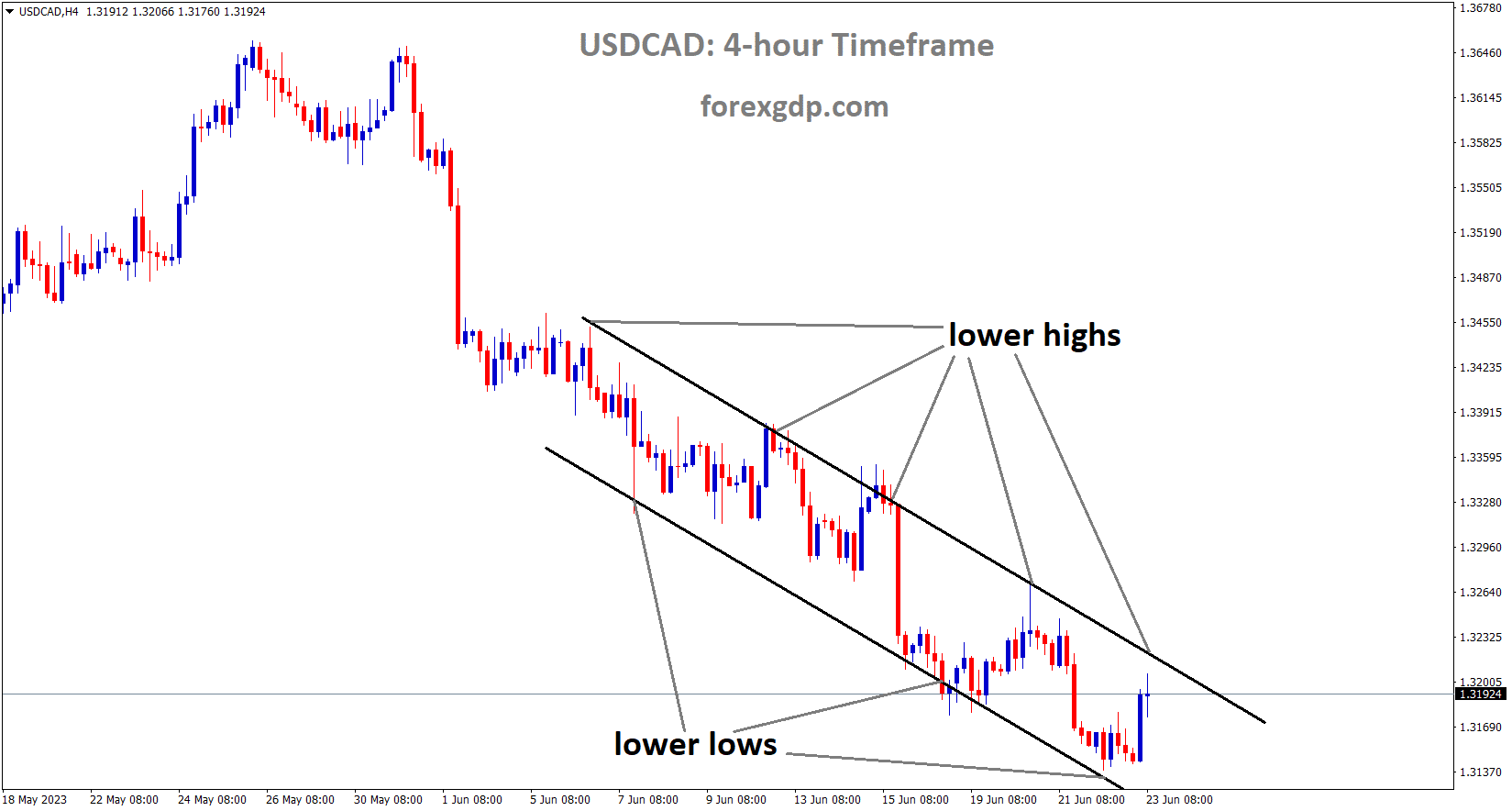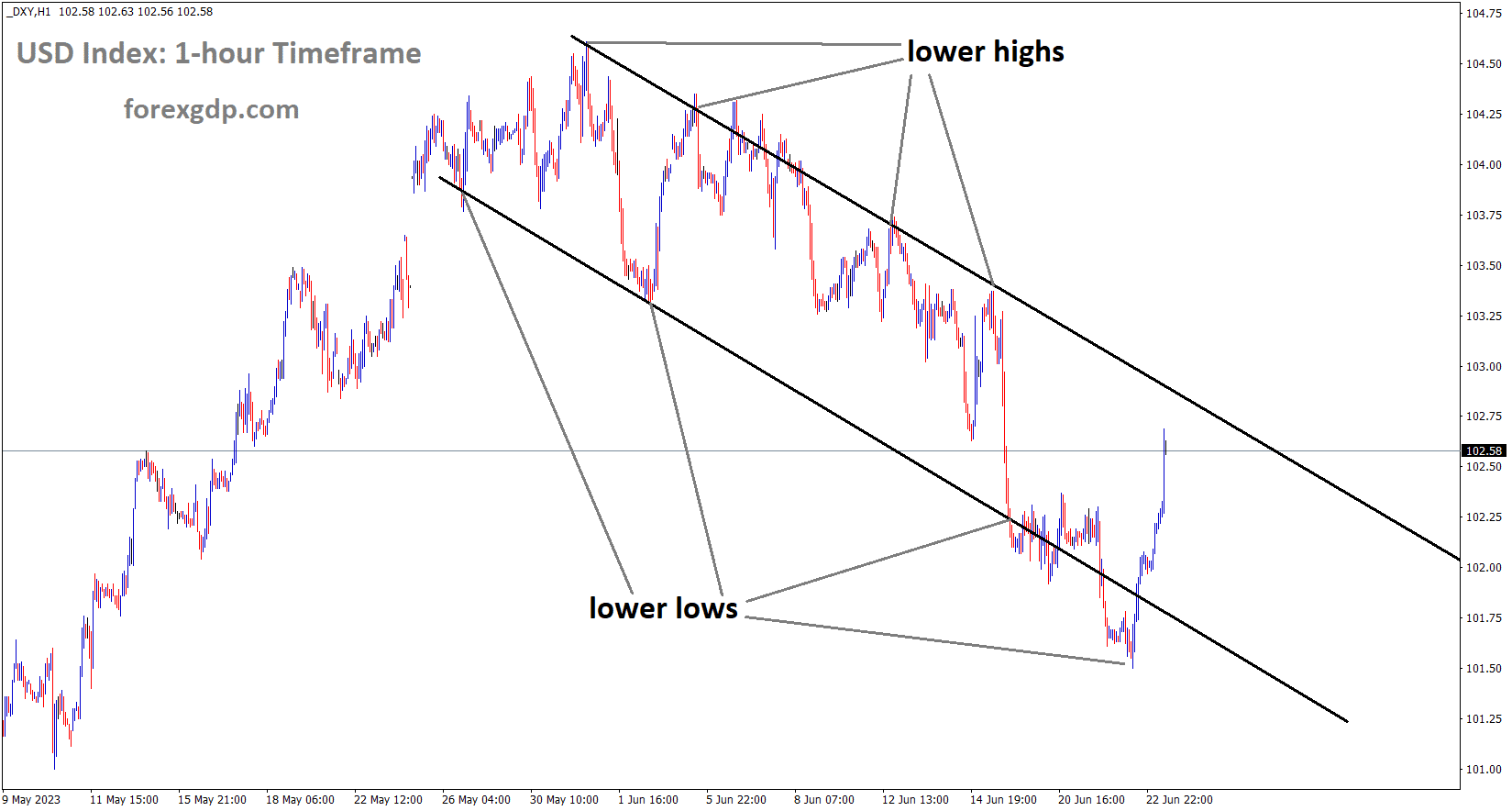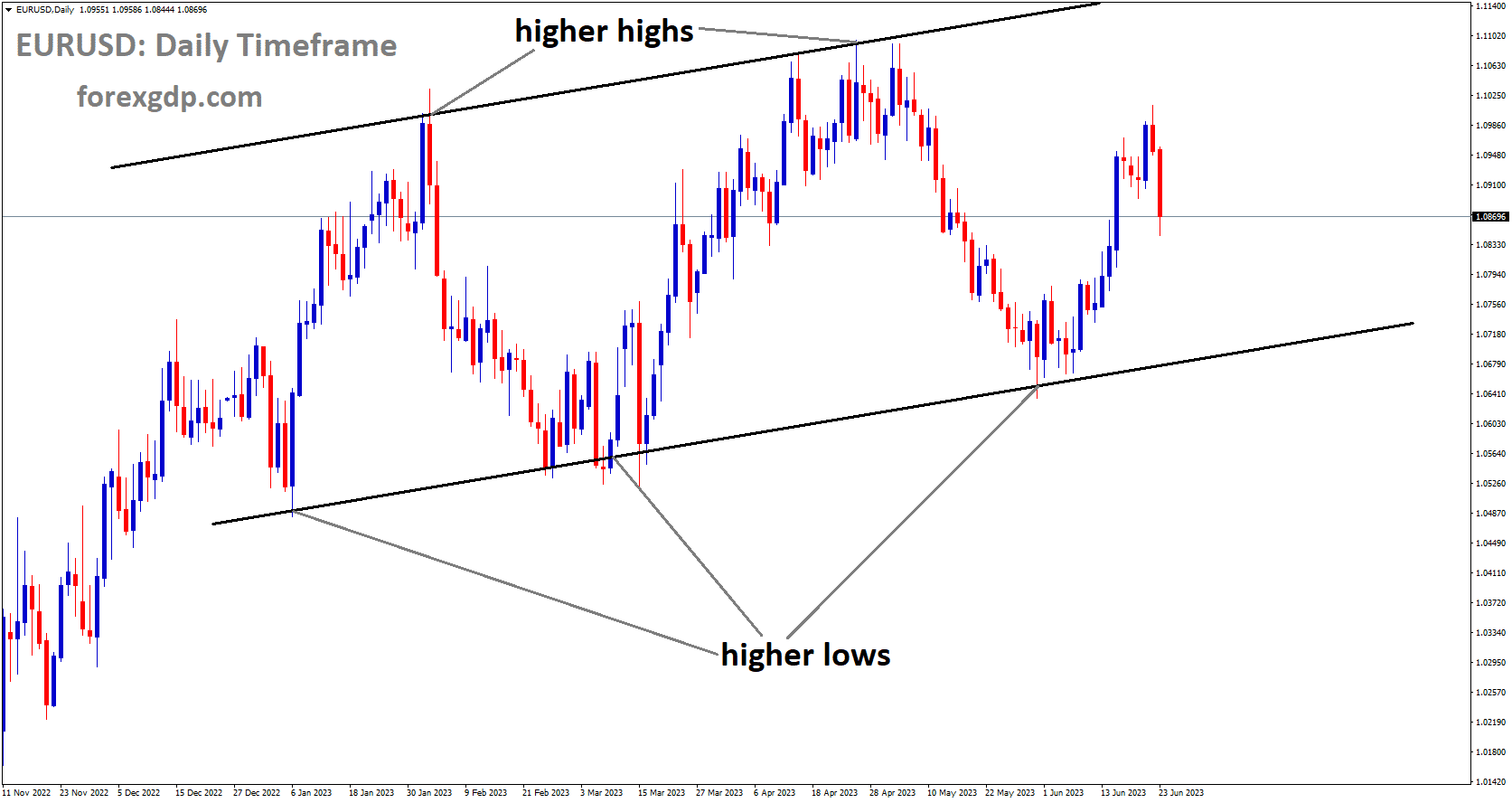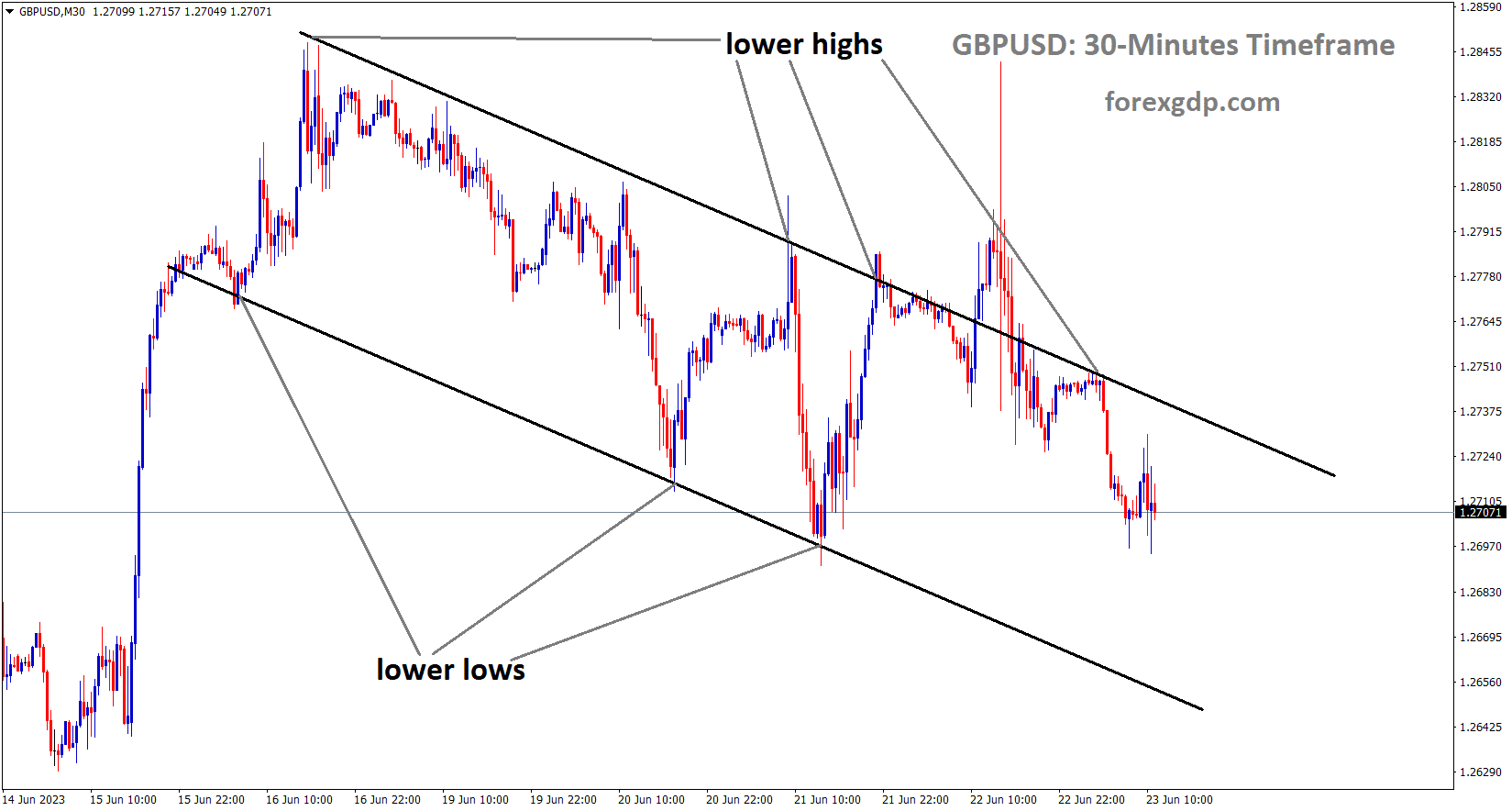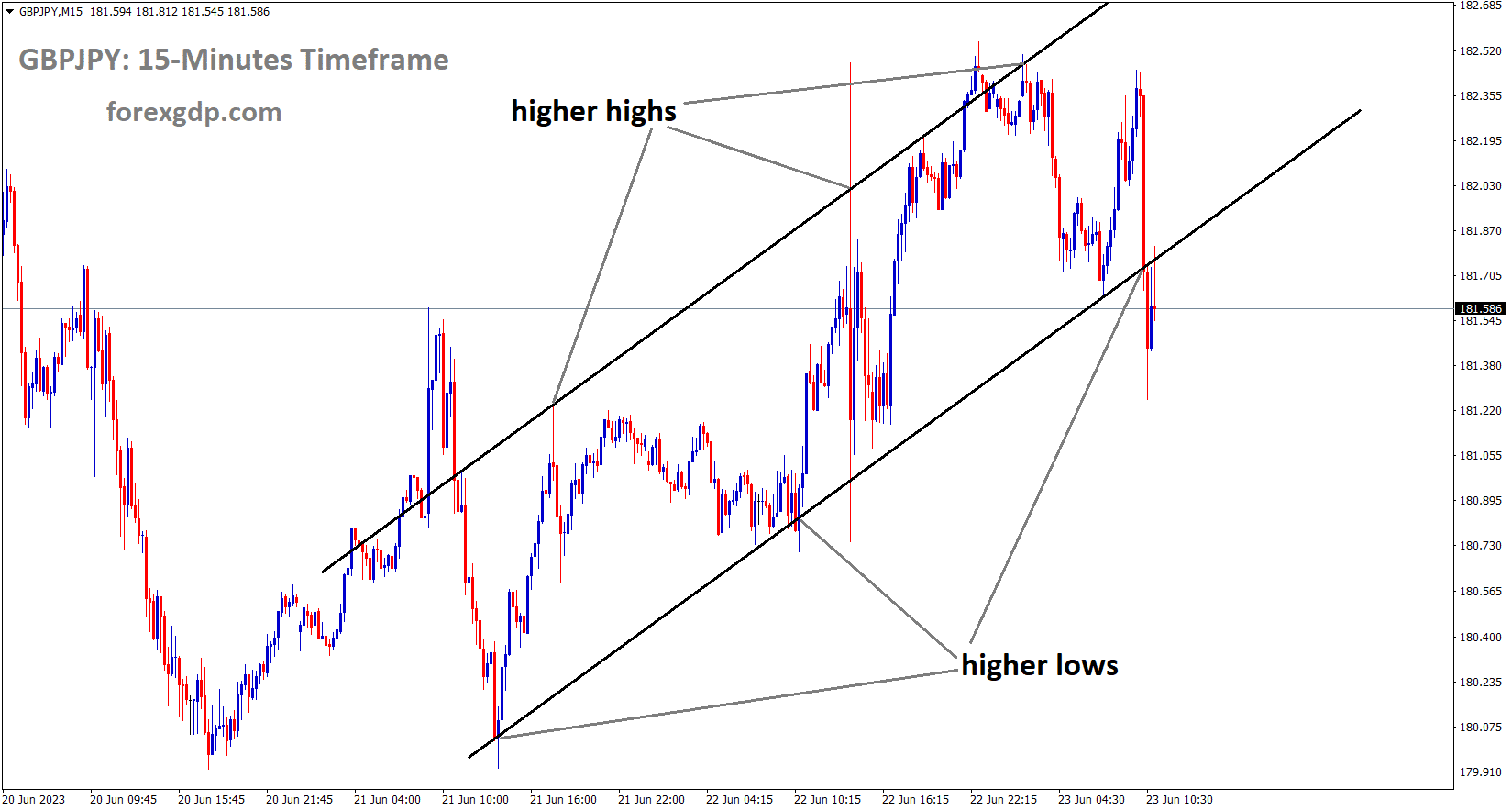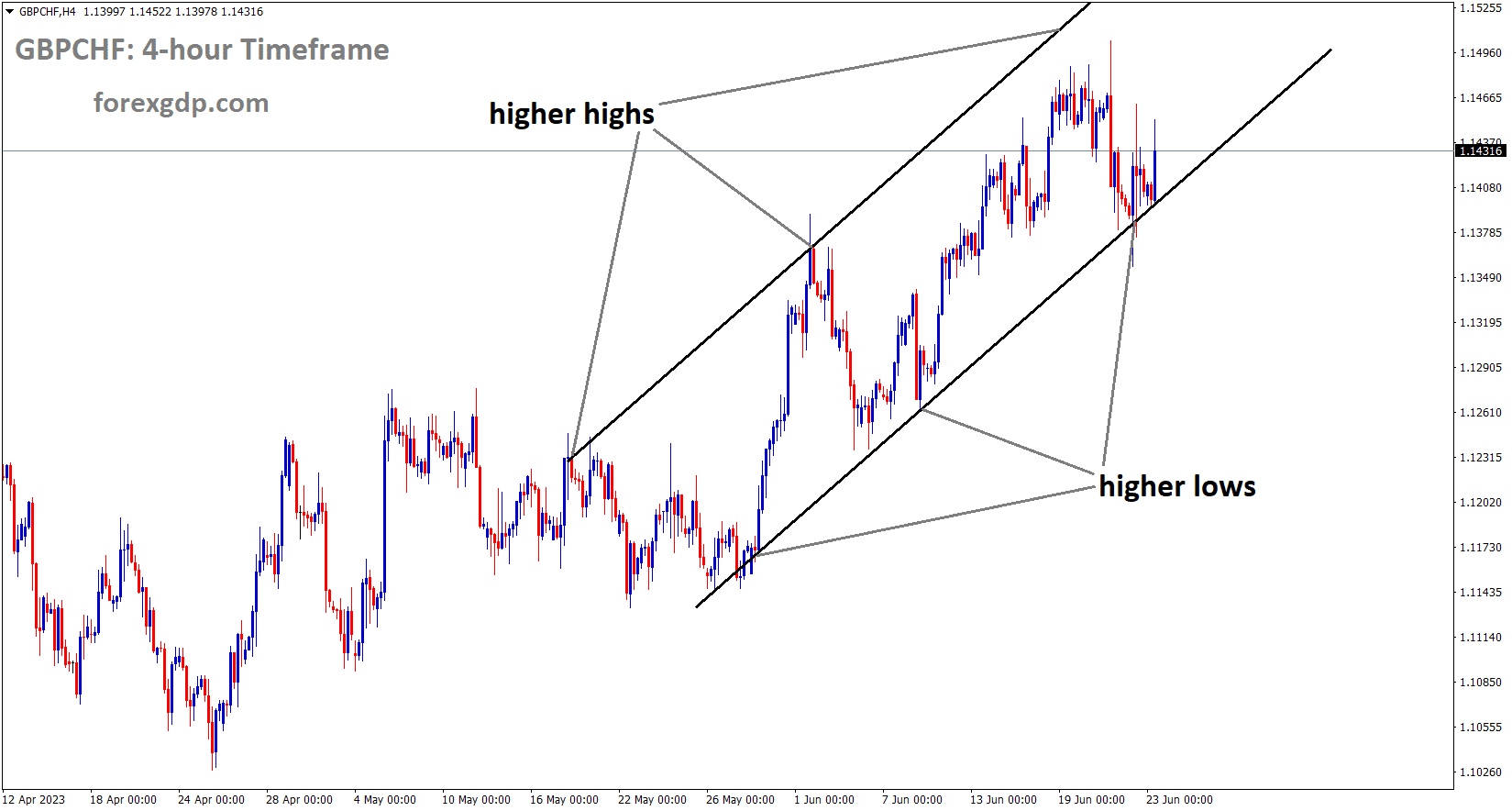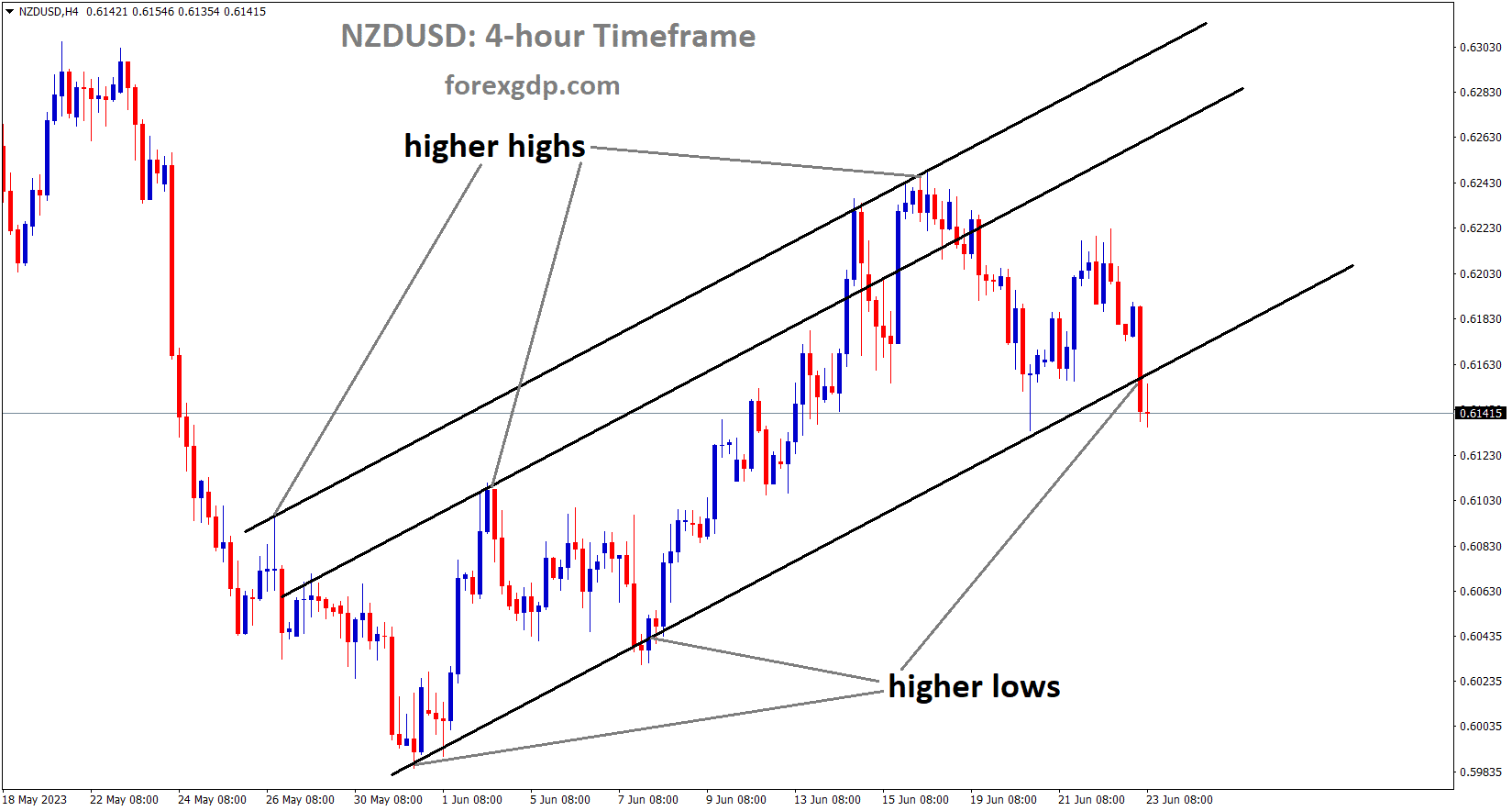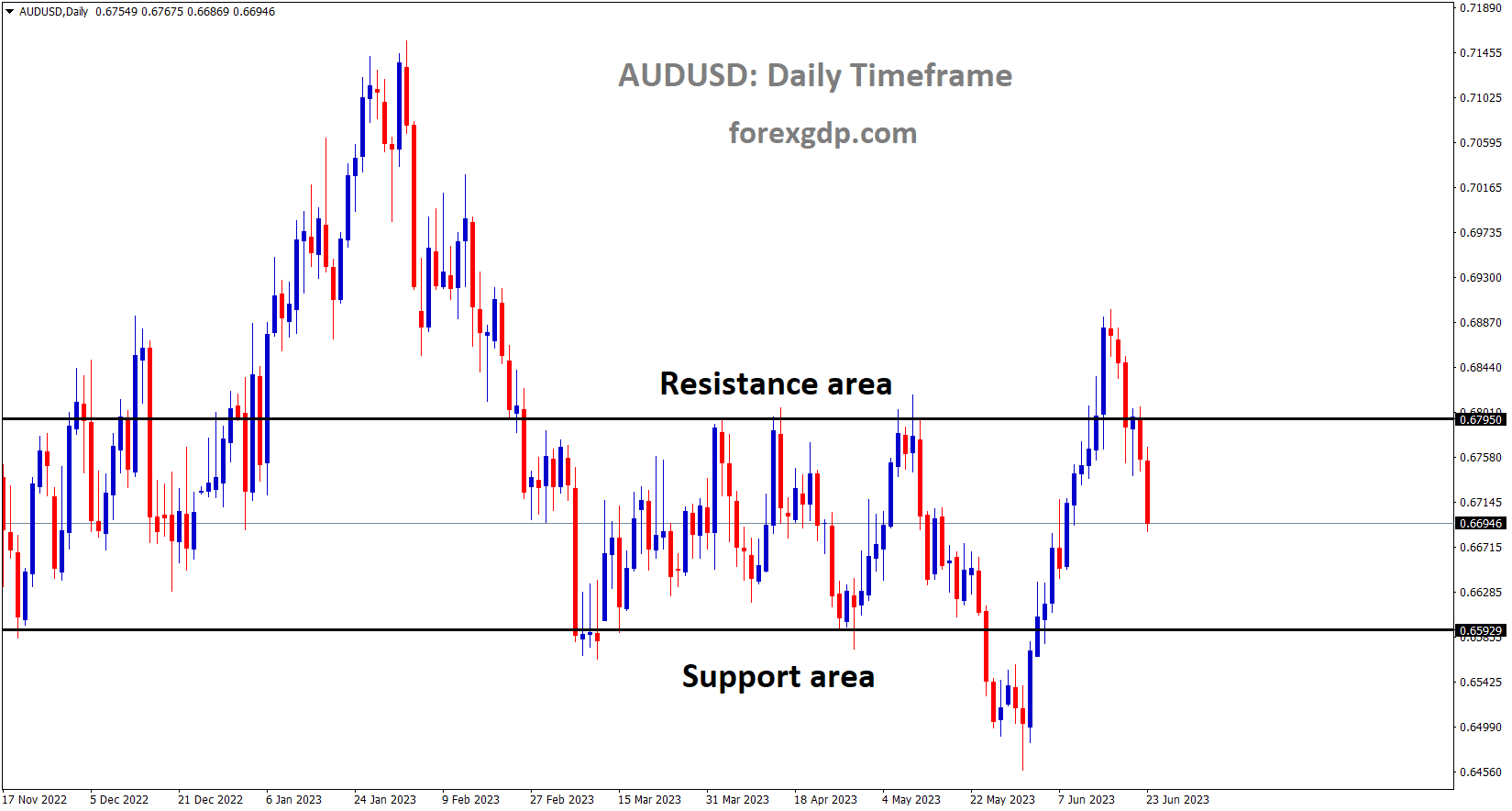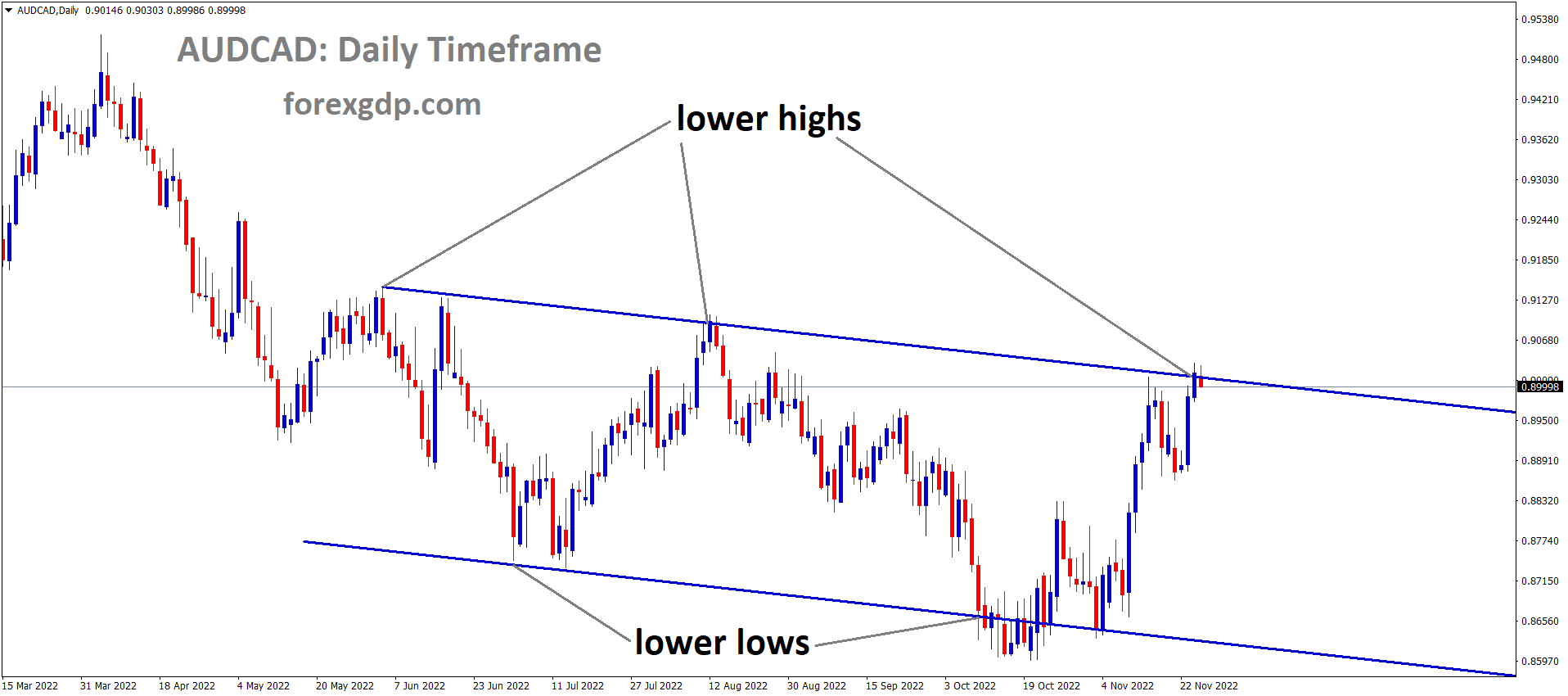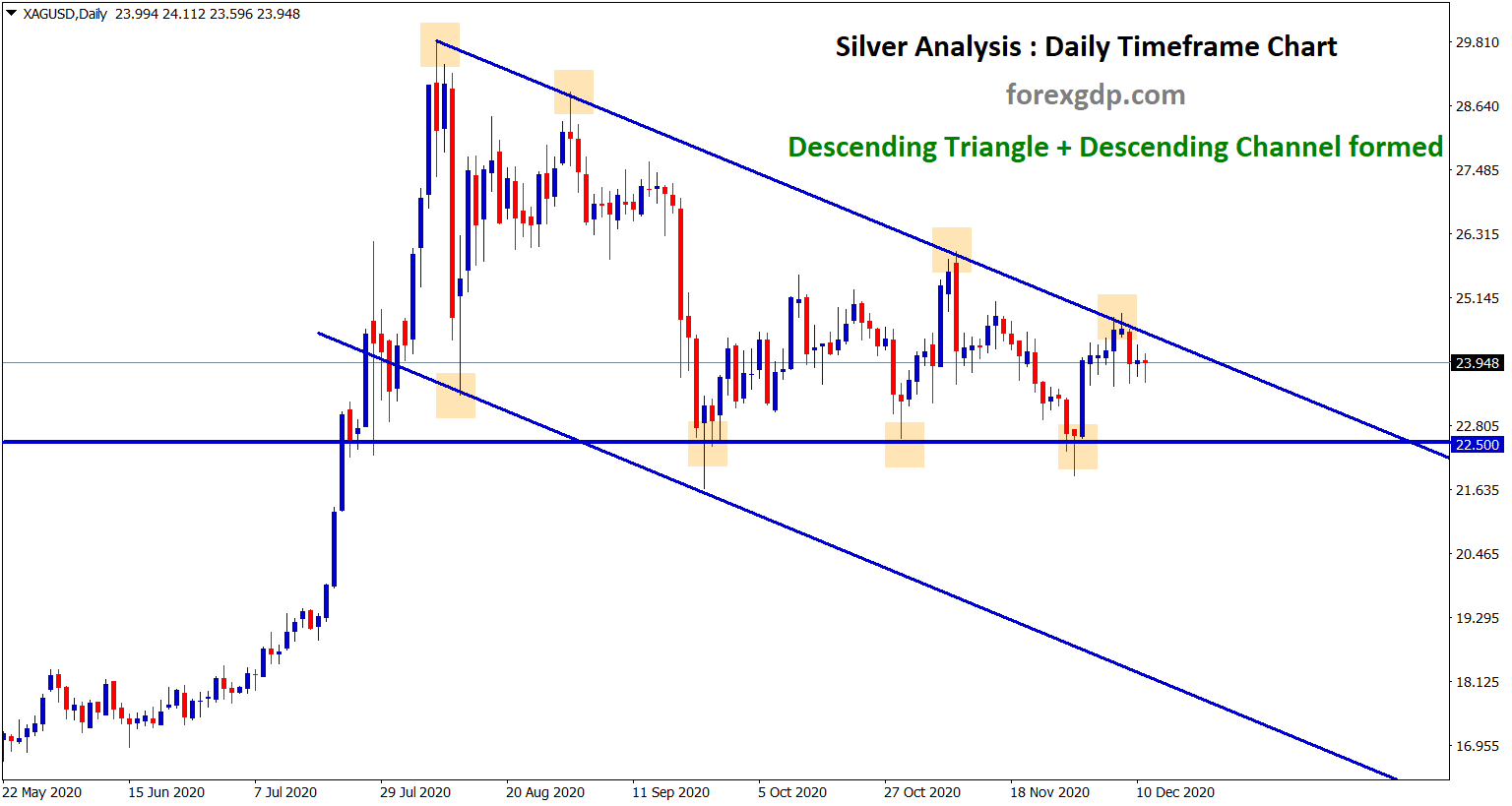GOLD Analysis
XAUUSD Gold Price is moving in the Descending channel and the market has reached the lower low area of the channel.
Gold prices are declining following FED Powell’s testimony before the Senate committee yesterday confirmed the market’s more hawkish expectations. Concerns about Covid-19’s comeback and Ukraine’s conflicts with Russia have led to a significant increase in gold sales by China to safeguard their economy.
Despite the fact that Federal Reserve Chair Jerome Powell’s congressional testimony the day before fell short of the markets’ more hawkish expectations, gold prices continued to decline on Thursday during the Asian and European trading sessions. The market remained under pressure as a result of the Bank of England’s larger-than-expected increase in interest rates. Speaking to the House Financial Services Commission about the Fed’s most recent Monetary Policy Report, Powell was limited to restating his remarks from last week, according to which additional rate increases were a “pretty good guess” if the economy continued on its current path. The central bank of the United States decided to stop raising rates this month, but the markets are fully aware that there may still be more increases in store given that inflation is still significantly above target. Powell has obviously not convinced them otherwise.But it is clear that some investors were taken aback by his failure to more clearly signal impending rate increases. Following his testimony, the US Dollar has significantly declined, but so has gold.
SILVER Analysis
XAGUSD Silver Price is moving in the Descending channel and the market has reached the lower high area of the channel.
Since the metal has no yield, it naturally performs better when other assets have lower yields. However, since interest rates are a key factor in determining yields, they may increase significantly in many significant Western economies. Last month, the European Central Bank raised them once more, and it appears that it will do so once more in July. The Bank of England raised interest rates once more on Thursday, this time by a substantial half-point, and will likely have to do so going forward. However, given the numerous economic uncertainties, including indications that China’s economic recovery is already faltering, the ongoing conflict in Ukraine, and the possibility of conflict in the South China Sea, gold’s perceived haven qualities are likely to support the market, as is the metal’s somewhat debatable role as an inflation hedge. The current retracement may burn itself out while the market is still above $1850/ounce, according to analysts at Credit Suisse, and may try to return to above $2000 later this year.
USDCAD Analysis
USDCAD is moving in the Descending channel and the market has reached the lower high area of the channel.
Following the last day’s decline in crude oil prices, the Canadian dollar moved lower. This deterioration follows Powell’s testimony to the FED on the previous day, which took a hawkish tone. In the day following the publication of the news, USDCAD spiked from lows.
On the last day of the week, the USDCAD pair draws some buying and, at least temporarily, appears to have ended a two-day losing streak to reach its lowest level since September 2022, near the 1.3140-1.31235 range touched on Thursday. Through the Asian session, the pair maintained a bid tone and is currently trading just below the 1.3200 level, up more than 0.25% on the day. Because of worries that rapidly rising borrowing costs will have a negative impact on the growth of the world economy and reduce demand for fuel, crude oil prices have added to their overnight significant losses and have been under some selling pressure for the past two days. Due to the weakening of the commodity-linked Loonie and some subsequent US Dollar buying, the USDCAD pair experiences some intraday short-covering activity. In actuality, the USD Index, which measures the value of the US dollar against a basket of six other currencies, builds on the day before’s encouraging recovery from its lowest point since May 11 and is bolstered by the Federal Reserve’s hawkish outlook. As a matter of fact, Fed Chair Jerome Powell reiterated during his two-day congressional testimony that the central bank is likely to raise interest rates again this year, albeit at a “careful pace,” in order to combat persistently high inflation.
Powell added that the Fed will not cut rates anytime soon and will hold off until it is certain that inflation is tumbling to the target level of 2%. The general gloomier mood surrounding the equity markets further demonstrates how investors’ sentiment is still being affected by concerns about a global economic downturn. The Greenback’s relative safe-haven status and the USDCAD pair receive additional support from the anti-risk flow. Despite the aforementioned positive fundamental environment, it will still be wise to hold off on positioning for any significant recovery until there is strong follow-through buying before concluding that spot prices have formed a short-term bottom. Market participants are now anticipating the release of the flash US PMIs, which will fuel demand for the USD along with the general risk sentiment. In addition, changes in the price of oil should give the USDCAD pair new life.
USD Index Analysis
USD index is moving in the Descending channel and the market has reached the lower high area of the channel.
The testimony of US FED Powell, which took place yesterday, justifies additional rate increases this year. Inflation reading approach interest rate hike in the coming months is possible, according to Powell of the Fed.
When measured by the USD Index, the dollar gains additional momentum and returns to the area of weekly peaks close to 102.70. On the strength of renewed speculation about additional tightening by the Federal Reserve and other major central banks, while recession fears remain high, the index maintains its optimism in the second half of the week. Inflation pressures are still high, and there is still a long way to go before getting inflation back to 2%, as Jerome Powell stated in his semi-annual testimony earlier this week. Powell opined that the Fed may need to take further action, possibly in the form of additional rate hikes, or at the very least, maintain current rates. He assured lawmakers that the Fed would continue to change its policy as inflation got closer to the goal set by the institution.
Flash Manufacturing and Services PMIs for the month of June are due later in the NA session, along with speeches from Atlanta Fed Hawk J. Bullard and St. Louis Fed 2025 Voter J. Bullard. R. Bostic, a hawk and Cleveland Fed L. Mester, a hawk, are both 2024 voters.The dollar sheds its recent sluggishness and recovers from recent multi-week lows in the sub-102.00 region. The continued strength of crucial US fundamentals, including employment and prices, supports the likelihood of another 25 bps hike at the Fed’s upcoming meeting in July. This opinion was strengthened by remarks made by Fed Chairman Powell at the June FOMC meeting, who referred to the July meeting as “live” and said that the majority of the Committee is ready to resume the tightening campaign as early as next month. The US economy’s soft or hard landing is a topic of ongoing discussion. Speculation of rate cuts in late 2023 or early 2024 contrasts the terminal interest rate at its peak. Fed’s reversal. Political effervescence in relation to China and Russia. US-China trade dispute.
US Treasury Secretary Janet Yellen claimed that the FED’s tightening pace will harm US businesses and consumer spending, raising concerns about an impending recession in the country. CPI is too low for US consumers to spend much, but FED rate increases make it possible.
EURUSD Analysis
EURUSD is moving an Ascending channel and the market has rebounded from the higher low area of the channel.
ECB Having a clear plan for a rate increase of 25 basis points in July is helping the euro against other currency pairs. Last month’s inflation reading for the Euro area was 6.1%, and the ECB can raise interest rates further to rein in the persistent inflation.
The EURUSD pair drifts lower for the second day in a row on Friday, continuing the overnight retracement slide from a six-week peak. It is currently just above the psychological level of 1.1000. During the Asian session, spot prices hit a two-day low and are currently trading near 1.0940-1.0935, down almost 0.20% for the day. After a brief period of consolidation on the last day of the week, the US Dollar regains positive momentum and rises further from its low point since May 11 reached on Thursday. This is then seen as putting pressure on the EURUSD pair. The increase in the USD may be attributed to Federal Reserve Chair Jerome Powell’s hawkish outlook, which supports the argument for more interest rate increases to combat persistently high inflation, albeit at a “careful pace”. Powell said during his second day of testimony before Congress that the Fed is delaying rate cuts until it is certain that inflation is falling to the target level of 2%. The US macroeconomic data released on Thursday, which showed that initial jobless claims remained stable at a 20-month high last week and indicated a softening labour market, is largely overshadowed by this, which continues to support the greenback.
In addition, a generally softer tone in the equity markets is perceived as another factor that favours the safe-haven dollar and adds to the offered tone in the EURUSD pair. Concerns about economic headwinds resulting from rapidly rising borrowing costs are fueled by a number of interest rate increases and a more pessimistic outlook by significant central banks. As a result of this and the deteriorating US-China relations, investors’ appetite for riskier assets is dampened. As a result, the market’s attention will now turn to the publication of the flash PMI prints from the US and the Eurozone. This will offer new indicators of the state of the world economy and give the EURUSD pair some significant impetus. In the interim, the likelihood of further interest rate increases by the European Central Bank may discourage traders from making aggressive bearish bets and, for the time being, limit the downside.
GBPUSD Analysis
GBPUSD is moving in the Descending channel and the market has fallen from the lower high area of the channel.
The Bank of England raised interest rates by 50 basis points yesterday in order to keep inflation at 2%, the goal and the services CPI; wage growth is higher in the UK. As anticipated, the cost of food and energy will decline in the coming months, necessitating additional rate increases if inflation remains stubbornly high.
The Bank Rate increased by half a percentage point today to 5%, the highest level in 15 years, according to the Bank of England. The committee voted to maintain rates at 4.5% by a 7-2 margin, with votes from Swati Dhingra and Silvana Tenreyro. The MPC stated that they would “continue to monitor closely indications of persistent inflationary pressures in the economy as a whole,” including the severity of labour market conditions and the trends in wage growth and services price inflation. More monetary policy tightening would be necessary if there were signs of longer-lasting pressures. According to the BoE, lower energy prices will cause inflation to decline “significantly this year,” while the CPI for services is expected to largely hold steady and food price inflation is anticipated to continue to decline in the near future.
GBPJPY Analysis
GBPJPY is moving in an Ascending channel and the market has reached the higher low area of the channel.
Powell’s testimony for the FED took a hawkish stance. As a result, the Japanese Yen fell last day against the USD. Compared to the US, the Bank of Japan has a lax monetary policy. The FED’s monetary policy is strict and exhibits greater market divergence. Core inflation in Japan was 4.1%, well above the BoJ’s target level of 2%.
Bank of Japan has not yet signalled any signs of a more rapid shift in policy, contrary to expectations. However, given that improving wage dynamics have not been widespread, the BoJ has had some support to continue defending their position that inflation is “transitory” despite the persistent rise in Japan’s core core inflation to more than twice the central bank’s target (4.1% versus 2% target). The BoJ is expected to keep interest rates unchanged for at least the next two policy meetings, according to current interest rate futures. Given that markets have been extremely responsive to even the smallest indications of policy normalisation from the central bank, it is possible that the question of whether the central bank will continue to modify its yield curve control policy will garner more attention.
However, communication has not always been a strong suit for the BoJ. You may remember how the central bank shocked the markets by unexpectedly raising the cap on the yields on its 10-year bonds in December 2022, which caused the USDJPY to fall by 4.3% in a single day. Any changes will continue to be unexpected because it is still unclear how the BoJ will eventually normalise its policies. The tone from the central bank appears to be more wait-and-see for the time being, which gives the Fed-BoJ policy divergence story some breathing room. In September 2022, the BoJ made one of its three currency market interventions by purchasing 2.8 trillion yen while selling US dollars. The second and third events, totaling 6.3 trillion yen, are scheduled for October 21 and 24 of 2022. Policymakers’ worries about the depreciating yen have not been as prominent as they were this time last year. Recent remarks from BOJ Governor Kazuo Ueda highlighted the fact that attention is paid to the rate and timing of decline rather than an absolute level, which may indicate some acceptance for the time being.
GBPCHF Analysis
GBPCHF is moving in an Ascending channel and the market has rebounded from the higher low area of the channel.
Last day’s 25bps rate increase by the SNB made the Swiss Franc’s movement against other currencies dull. Inflation for the month of May decreased to 2.2% from the 2.6% printed in April, according to SNB Chairman Thomas Jordan, but it is still too high to reach the 2% target. In order to maintain the inflation target of 2% in the future in a stable manner, we will need to raise rates again.
The Swiss National Bank increased its policy interest rate by 25 basis points on Thursday as the institution continued its drive to curb persistent inflation and gave a warning that additional tightening was likely to follow. As the SNB raised Swiss rates for the fifth time in a row, Chairman Thomas Jordan warned of escalating inflationary pressures and the threat of price increases becoming entrenched.
NZDUSD Analysis
NZDUSD is moving in an Ascending channel and the market has reached the higher low area of the channel.
NZD Dollar appears weak as a result of the Bank of England raising the interest rate by 50 basis points and the Fed’s Powell testimony taking on a more hawkish tone on the final day. Since there are no significant NZ news stories scheduled for this week, the market is looking to this month’s news from the US, UK, and AUD.
The USD recovered as a result of large increases in the UK and Norway as well as Powell’s hawkish testimony. ANZ Bank economists discuss the outlook for the NZDUSD. The hawkish testimony of Fed Chair Powell and the large hikes by the Norges Bank and Bank of England, which all put pressure on US interest rates to rise, have caused the USD to strengthen, which has caused the Kiwi to decline. There is a sense that more tightening is coming in the Northern Hemisphere, which may start to favour those currencies, despite the fact that changes in rates and FX were muted. Given the lack of local data today and next week, the New Zealand dollar is expected to fluctuate along with global trends until a significant event occurs in the area. Given correlations, all eyes will be on the RBA decision on July 4th.
AUDUSD Analysis
AUDUSD is moving in the box pattern and the market has fallen from the resistance area of the pattern.
The June preliminary S&P PMI for Australia showed no signs of declining. The AUD/USD pair is giving off bearish signals amidst the risk-aversion theme. The optimistic Australian PMI release also failed to give the Australian Dollar any support. Manufacturing PMI came in at 48.6, exceeding the forecast of 48.1 and the previous report of 48.4. Additionally, the Services PMI at 50.7 beat forecasts of 50.1 while remaining below the previous release of 52.1.
Don’t trade all the time, trade forex only at the confirmed trade setups.
Get Live Free Signals now: forexgdp.com/forex-signals/

